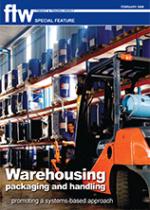In the past three decades, traditional
warehousing has declined – first of all
with the start of the almost bus-stop
regularity of containerised shipping.
But it was the gradual introduction of
just-in-time (JIT) techniques – designed
to improve the return on investment of a
business by reducing in-process inventory –
that really swung the change.
It promoted the delivery of product directly
from the factory to the retail merchant, or
from parts manufacturers directly to a large
scale factory such as an automobile assembly
plant, without the use of warehouses.
However, over the same time period, and
with the gradual implementation of offshore
outsourcing and offshoring, the distance
between the manufacturer and the retailer
(or the parts manufacturer and the industrial
plant) grew considerably. This bred the
demand for national or regional warehouses
in any specific supply chain for a given range
of products.
But, despite this evolution, one basic
question has remained the same since time
immemorial. Does a company have its own
warehouse(s); rent space in a third-party
owned facility; or contract a large portion
of, or a whole warehouse, and third-party
operating staff?
This means that the warehousing industry
comprises three types of premises: public
warehousing; private warehousing; and
contract warehousing.
What is public warehousing? It is a
warehouse owned and operated by a thirdparty;
charging in particular for type of
services used; and mainly for short-term
usage.
Private warehousing, also known as
proprietary warehousing, is operated as a
division within a company. It is either on-site
(at a central location or dispersed throughout
manufacturing facilities) or off-site (satellite
facilities located close to marketing areas to
store excess on-site inventory and to serve as
distribution centre for finished goods).
It requires substantial corporate
fixed investment in land, building, and
equipment.
Contract warehousing, on the other hand,
is a variation of public warehousing.
It is a long-term contract and/or services
in a warehouse owned and operated by a
third party – offering customised services/
space over a long term. It is also a trade-off
between location flexibility (for assured space
over the contract period), and a price that is
usually lower than standard warehousing
rates. Contacts can either be arranged for an
entire building or for a defined, fixed portion
of square-metre or cubic-metre space.
Consider the benefits
25 Feb 2009 - by Alan Peat
0 Comments
Warehousing 2009

25 Feb 2009
25 Feb 2009
25 Feb 2009
25 Feb 2009
25 Feb 2009
25 Feb 2009
Border Beat
17 Jun 2025
30 May 2025
Poll
Featured Jobs
New
